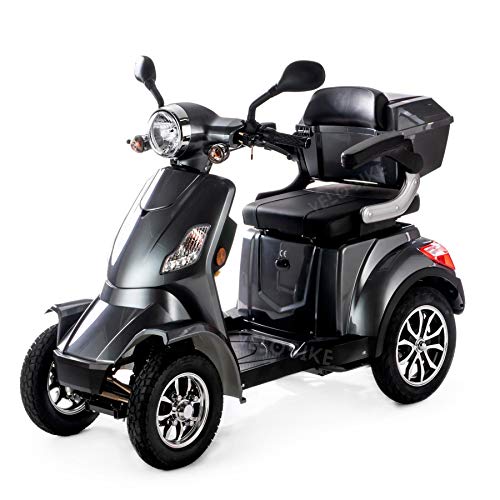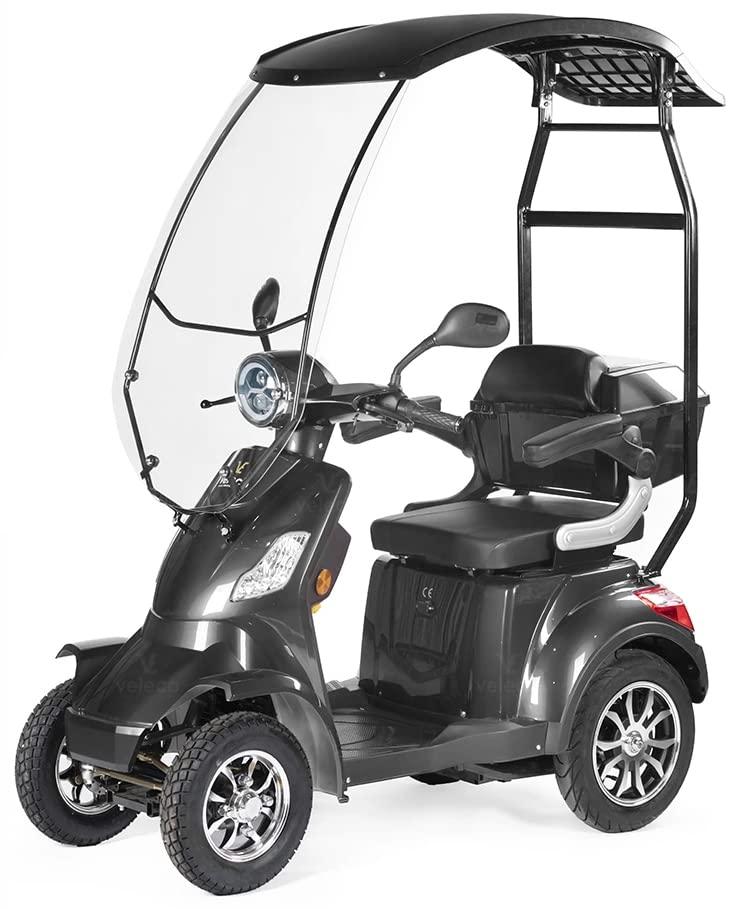The 10 Scariest Things About Electric Micro-Mobility
페이지 정보
작성자 Rodrick Mccartn… 작성일25-02-07 10:26 조회5회 댓글0건관련링크
본문
 NYCHA and EV Micro-Mobility
NYCHA and EV Micro-MobilityThe EV micro-mobility system is an affordable way to fill first-and-last-mile gaps and complements public transportation. NYCHA recognizes the importance of e-bikes, e-scooters and shared e-scooters to help residents with low incomes.
However, they also pose an array of unique challenges. Particularly, they must be tracked and monitored.
Accessibility
electric power mobility scooter micro-mobility is a fast-growing segment of the transportation industry. It provides technology and service providers with significant opportunities to change urban mobility concepts and also reduce congestion. However, the growth of this market has also created challenges for the sector. These include data collection, safe battery implementation, and charging infrastructure planning. These challenges must addressed to ensure that electric micro-mobility can be utilized by all, including those with disabilities.
Electric-powered bikes, scooters, and other lightweight, small devices can allow users to travel further, faster, and in greater comfort than they would with traditional scooters and bikes. They are able to be used on sidewalks, city streets and bike paths as well as trails. They are usually powered by lithium-ion batteries, and have a the capacity to travel up to 20 miles per charge. They can be bought for personal use, or hired through a sharing system.
In cities across the world, a rising number of innovative ebike and escooter systems are integrated into their shared mobility networks. This has helped them reduce their carbon footprint and increase their efficiency. They also offer new transportation options for those who would otherwise be dependent on transportation via cars. The availability of these vehicles has increased access to mobility services and made it easier for communities to withstand situations like oil shortages and weather disruptions.
In the United States, the e-bike market has seen a rapid growth in recent years, driven by technological advances and consumer demand. The market is dominated by a few companies, such as Ninebot, Segway, and Yunxi which produce high-quality products that are priced at a reasonable price. These companies are striving to expand their market shares by implementing aggressive marketing strategies and alliances.
While e-bikes, escooters electric mopeds, Cheap Electric Mobility Scooters For Adults scooters and other devices for micro-mobility use relatively little electricity, their growing popularity will increase the demand for energy on the grid. This will require an enormous investment in charging stations and infrastructure. Utilities are able to prepare for an increase in demand by using smart grid technologies. They can monitor the charging habits of consumers, launch demand response programs, and offer incentive-based rate plans for EV charging.
The potential fire hazards associated with e-micromobility are still a serious concern despite their claims to promote economic equality and social equity. In addition, the proliferation of e-micromobility devices in public housing will necessitate stricter regulations to protect residents' safety. The e-micromobility policies of NYCHA are designed to avoid fires, injuries and other incidents, while also offering residents with a cost-effective and convenient alternative for transit.
Energy efficiency
amazon electric mobility scooters micro-mobility is eco sustainable and requires less energy. Its battery uses renewable sources, which means that it produces no carbon dioxide. This is an important benefit for cities that are trying to meet carbon neutral targets and reduce air pollution. Additionally, they require less space to park and are quieter than cars.
These new vehicles, be they an escooter, an electric bike or even a monowheel, are changing the way people move about urban areas. Their growing popularity has led city governments to examine their impact on sustainable transportation. Depending on the type of vehicle and the power source, electric micro-mobility can help reduce traffic congestion, improve air quality, and save money on fuel. The new vehicles may also challenge existing infrastructures and laws.
The most well-known micromobility devices are e-scooters, which are small and electric scooters that are rental via smartphone apps. These scooters are capable of traveling at speeds up to 30 km/h, and can be utilized on sidewalks, bike paths, or on streets. Other options for Four wheels electric Mobility scooter micromobility include e-bikes and rickshaws.
These new transportation alternatives are gaining popularity and the modal percentage of EMM is projected to increase by 5-10 percent in Europe by 2030. However, researchers need to better understand the determinants of EMM use, which includes the contextual and electric mobility scooters for adults individual factors. This review examines the current state of knowledge about the factors that influence EMM use and identifies future research priorities.
There are currently many obstacles to the widespread use of electric micro-mobility. One of the issues is the absence of a reliable charging infrastructure for e-scooters as well as other devices. Another concern is safety. If these concerns aren't addressed, the potential benefits of this form of transportation could be reduced.
Some cities are therefore struggling to find a way to accommodate these vehicles, without compromising the integrity or security of the roads or bridges. One option is to construct dedicated laneways for them. In this case, drivers will be required to adhere to strict traffic laws and speed limits. The device should also be equipped with specific technology to perform as it should. Additionally, the batteries must be designed to comply with international standards and are subject to frequent replacements.
Environmental impact
Electric micro-mobility offers a range of environmental benefits, such as reduced energy consumption and emissions. However, the devices need electricity to operate, so their use can increase peak demand. Utilities can mitigate this impact by analyzing consumers' charging behaviors and introduction of demand response programs. They can also offer net-metering of electricity at the point of sale to customers and incentive-based rate plans for EV charging. The growth of ebike and escooter services can also provide new business models and investment options for utilities.
A key consideration in assessing the environmental impact of shared electric micro-mobility (EMM) is the life cycle assessment (LCA). LCA provides a comprehensive evaluation of the environmental burden of shared electric micro-mobility services, by considering a variety of factors that include raw-material extraction, manufacturing, energy consumption and the management of the end-of-life. Most studies used the cumulative energy demand method to measure primary energy consumption, while others used other methods of impact assessment such as ReCiPe or IPCC.
The the sensitivity of GWP estimates derived from the life cycle evaluation of EMM is dependent on the duration of the vehicle as well as the battery's manufacturer and material, and the power source mix for charging. The sensitivity of the rebalancing phase is also important and is the reason for nearly 50% of the reviews analyzing rebalancing scenarios to determine the impact it has on GWP estimates. Many of the rebalancing scenarios have minimal impacts, especially when the vehicles are retrieved by low carbon servicing vehicles such as e-vans and e-cargo bikes or when service distances are reduced.
Although a myriad of micromobility vehicles have been developed however, there are still a few obstacles for the sector to grow. These include a lack of policies that promote the concept of a shared micromobility system and concerns over the security and reliability of e-bikes and scooters. While the market is evolving, a number of public and private organizations are working to address these issues. These initiatives include the establishment of a shared bicycle and scooter systems that allow people who might not be able to use traditional scooters and bicycles to be able to use. Other initiatives include the development of mobility-as-a-service platforms, which consolidate a variety of transportation options into one convenient service.
Safety
Micro-mobility has seen a huge rise in popularity in the last few years. However there is plenty of work to do. While the latest technology has many benefits however, it also has many safety issues. Battery fires, accidents, and accidents are among the most frequent dangers connected with micromobility. These risks can be mitigated by a variety best practices. NYCHA has developed a set of guidelines to promote the safe usage of e-micromobility in their communities. NYCHA has also developed guidelines to charge the batteries within these devices. This reduces the chance of a fire, which is particularly dangerous for children and seniors.
The main safety concern with electric micromobility is the possibility of battery fires. These devices are powered by lithium-ion batteries, which could cause serious injuries or death when they catch fire. Lithium-ion batteries can be extremely explosive and release toxic gasses, making them difficult to put out. To prevent this from happening it is recommended to follow all suggested charging techniques and buy top-quality batteries manufactured by trusted brands. It is also important to buy a device that's been UL (Underwriters Laboratories) tested and certified.
Another safety issue is that administrative and regulatory structures have only recently started to monitor and identify the e-scooter and ebike-related accidents. For instance police incident reports and emergency room records from hospitals have only begun to collect searchable information on e-scooter and e-bike-related injuries in 2023, leaving a gap in the available safety and legal information.
Fortunately, several organizations are working to address these challenges by creating a network that provides secure and fair options for mobility for all residents. They are creating teams across departments and pilot studies to test innovative ways to promote micromobility. These efforts include community involvement, e-scooter ambassador programs, and rider education. They are also examining the possibility of introducing new funding sources as well as establishing procedures for reporting injuries.
 The advent of compact electric mobility scooter micromobility has reshaped traditional modes of transportation. It is an excellent method to increase mobility and accessibility for those with disabilities. These vehicles offer an efficient alternative to walking or riding a wheelchair and can help bridge the first and last mile gaps. They can also be a great alternative for older adults who aren't able to drive or walk long distances.
The advent of compact electric mobility scooter micromobility has reshaped traditional modes of transportation. It is an excellent method to increase mobility and accessibility for those with disabilities. These vehicles offer an efficient alternative to walking or riding a wheelchair and can help bridge the first and last mile gaps. They can also be a great alternative for older adults who aren't able to drive or walk long distances.Warning: Use of undefined constant php - assumed 'php' (this will throw an Error in a future version of PHP) in /data/www/kacu.hbni.co.kr/dev/skin/board/basic/view.skin.php on line 152
댓글목록
등록된 댓글이 없습니다.

